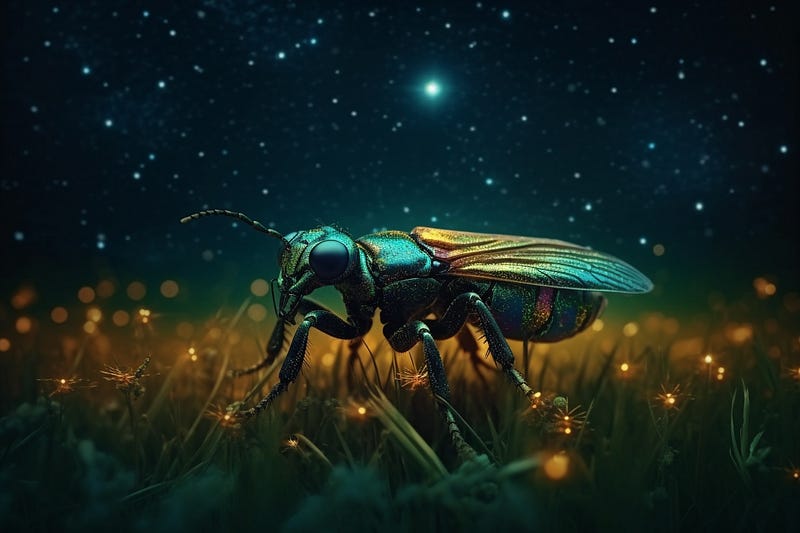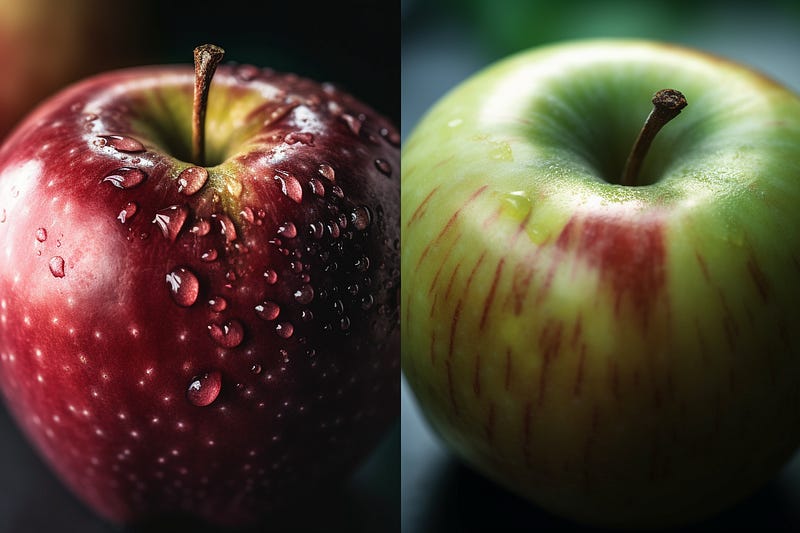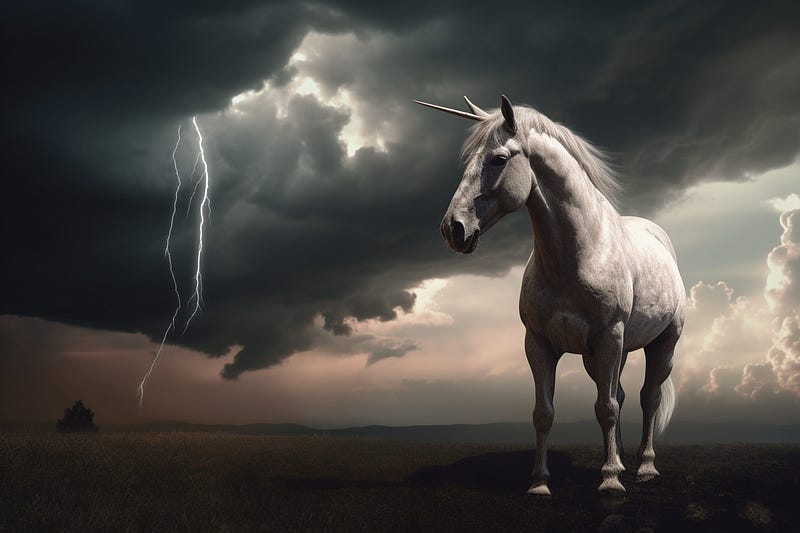4 Ways Adobe Reshapes the Generative AI Image Market
Adobe’s entry into the generative AI marketplace promises to reshape the competitive landscape. While Midjourney, Stable Diffusion, and to…
Adobe’s entry into the generative AI marketplace promises to reshape the competitive landscape. While Midjourney, Stable Diffusion, and to a lesser extent Dall.E dominate the generative AI image market, it is still a relatively unestablished sector with great opportunity.
Expect Adobe to leverage its dominant enterprise, professional designer, and photography customer bases to corner the professional generative image space. Of course, their actual technology — most notably generative AI tools Firefly and Sensai — needs to catch up to the unicorns. However, I expect Adobe’s development of fully competitive tools to be a matter of time. Consider how every time a Photoshop competitor or video editor competitor arises, Adobe rises to the occasion.
But there is more to Adobe’s entry than a simple battle of startups versus an established player.
Greg Verdino and I discussed the Adobe dynamics in our launch episode of the No Brainer Podcast (check it out), an AI podcast for marketers discussing the trends and developments shaping the future of the market today.
The conversation revolved around the coming shake-out between big tech and an overcrowded AI startup scene. In addition, we talked about why marketers need to move beyond AI tools and tactics to make strategic decisions about the right AI tech stack and the best use cases to deliver real benefits for their organization.
Verifying our thinking, Adobe launched an advertorial campaign last week targeting enterprise marketers and executives on CNBC. If you want to understand the marketing perspective of generative AI, this advertorial offers some deep insights, outlining Adobe’s strategic vision.
Let’s look at the four reasons why Adobe is in a position to lead this market.
1) Ethical AI First
Adobe caters to enterprise marketers, creatives who develop content for corporate brands, and photographers who make their living licensing copyrighted images. It is no wonder that Adobe’s overall position on generative AI revolves around ethically sourcing training data in the form of images.
Firefly was likely trained with Adobe’s budding Stock business and creative commons. Of course, some suggest its lack of training data is one of the primary reasons Firefly is behind. I would argue it has more to do with algorithm quality, as Adobe is quite capable of getting images, perhaps even already accessing training content via its private cloud business via its 2022 licensing update.
Adobe is ensuring its customers feel safe using its products and that the company encourages ethical use of its own AI program. These goals were overtly stated in the CNBC advertorial. And it’s smart to resolve an immediate objection. It cannot be understated how uneasy many marketing departments feel about generative AI images.
Consider Midjourney’s recent deepfake PR crisis spawned by users lampooning Donald Trump’s recent arrest and the Pope wearing a puffer. And then there is Italy taking the very aggressive step of banning ChatGPT because of privacy concerns. Consider that because generative images are created by an algorithm and not a human, they are currently not copyrightable.
All these factors make CMOs uneasy. No one wants to get sued over their marketing campaign. Adobe’s aggressive stance in favor of ethical AI makes its solutions appealing to enterprise customers and the vendors who serve them. They are safe.
2) Existing Customer Base
Like Salesforce and Hubspot, Adobe already has a significant base of enterprise marketing customers. Through its Marketing Cloud automation platform Marketo Engage, it competes directly with Hubspot and Salesforce’s marketing automation platforms.
However, it has a significant advantage here: Adobe is The Dominant Player in the photo, graphic design, and video software markets, making it's Creative Cloud solutions a virtual lock for every enterprise. The closest competitors are Apple in the video market, independent CaptureOne in photography, and a bunch of small competitors in graphic design.
Factor in Adobe’s interoperability between its products, and you have an easy upsell path for almost every CMO, agency, and independent out there. It is much easier to upgrade an existing license than to get a new one, particularly for larger enterprises and their procurement processes.
The unicorns are generally priced for individuals, causing companies to create independent accounts and go through any necessary IT hurdles to integrate Discord.
3) Product Integration and Tech Stack Matters
Adobe’s Firefly and Sensai AI products are not winning fans over yet. They are not Midjourney, Stable Diffusion, or ChatGPT, per se. However, they are as good as second-tier generative AI text and image solutions so far. So why would a company be more interested in Adobe beyond ethics and an easier contract?
The Adobe product roadmap already has FireFly integrations into its Creative Cloud products. That makes it imminently more valuable to creative departments, small and large. Now they can create diverse hybrid media content in a much more controllable and powerful format. Altering Firefly images to taste is simply a matter of understanding Adobe’s interface instead of becoming a master prompt engineer.
There are great parallels between Adobe’s Creative Cloud tech stack and the Microsoft Office suite. Every part works to support the larger suite’s value to the enterprise.
Like Microsoft, don’t expect Adobe to open its tech stack beyond the current APIs to make it easier for Midjourney, Stable Diffusion, or Open AI to integrate into their products to the same extent as the forthcoming FireFly images (Stable Diffusion already integrates into Photoshop with current APIs).
What about the unicorns’ products? They have no integrations into existing creative suites. In fact, they basically have no current plan to serve enterprise customers beyond licensing their algorithms and platforms to other companies who want to offer their capabilities via their own integrations.
While the AI creators may choose to sell to marketing departments and agencies, it would require taking on Adobe. It’s probably easier to license out their platforms and algorithms to the established players, integrators, and service providers who already have platforms and the means to scale generative AI to companies that want them.
4) Adobe’s Resources Make It a Dangerous Competitor
In addition to its ethical position, existing customer base, and powerful tech stack, Adobe has significant resources at its disposal. When I wrote this article, its market cap was $176 billion, with $17.6 billion in annual revenue, and almost 30,000 employees working for it. These resources make it more than just another entrant into the generative AI space.
Adobe has three obvious paths to catch up to and surpass Midjourney and Stable Diffusion: 1) Via its own resources; 2) licensing leading algorithms as Salesforce and Hubspot have done with ChatGPT, or 3) acquiring a leading generative AI image unicorn.
Keep in mind that Adobe acquired Marketo for $4.75 billion to compete in the marketing automation space and further cement its Marketing Cloud position. Acquisition is basically what Microsoft pursued to enter the generative AI space with its 50% stake in OpenAI.
Conversely, AI unicorns are venture-based and operate in a restrictive and unstable financial market. Moreover, there are too many generative AI players catering to the same individual users. One can easily argue that the fight for venture dollars and recurring subscriptions is going to get harder, not easier, whether it is this year or in the not-too-distant future.
Conclusion
Adobe’s current market stature makes it the player to beat when it comes to creating images in the marketing world. Given that this is the ultimate revenue path for image creation software of any type, generative AI image creators have their work cut out for them now that the 800-pound gorilla has arrived.
With so many players in the market and more coming every week, sooner or later, consolidation will occur. The marketing sector’s history would indicate that it is as likely that the existing tech giants will acquire most of the generative AI image leaders. And the rest of the pack will have a hard time of it.
All images created by me on Midjourney. I still haven’t gotten access to FireFly. Whoops.








